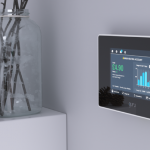There is a misconception that the benefits of industrial robots are reserved for few manufacturing giants. However, according to the Robotics Industries Association (RIA), enterprises with less than 100 employees and less than ten robots represent a growing segment of the robotics market. Here, Neil Ballinger, head of EMEA at automation parts supplier EU Automation, explains what to consider when implementing robotics in small and mid-sized manufacturing businesses.
Small and medium-sized enterprises (SMEs) are the economic backbone of some of the most industrialised countries in the world. In Germany, for example, they generate about 37 per cent of total corporate turnover.
SMEs represent a very attractive market for robot manufacturers, who are adapting their offer to add flexible, user-friendly and cost-effective solutions to their portfolios. These can be a real asset for smaller businesses, but to choose the best one for their needs, manufacturers should ask themselves the right questions.
Why do we need it?
Manufacturers might fall victim to the pressure to digitalise without a specific strategy in mind, but assessing the plant’s real needs is key to investing in the right tools.
Ask yourself what kind of challenges your company is experiencing, and whether or not they can be tackled by industrial robotics. Are you struggling to fill positions for repetitive manual tasks? Are dangerous operations impacting workers’ safety? Would you like to add night and weekend shifts without increasing labour costs?
These issues can be successfully tackled with robotics. Indeed, if a task doesn’t require thinking on the spot, creativity, or human dexterity, it can probably be automated.
Can we afford it?
SMEs are usually characterised by small production runs, but thanks to the latest innovations in collaborative robotics, manufacturers no longer need huge volumes to build a solid business case for investing in robotics.
According to robot supplier RobotWorx, an industrial robot typically cost between £50,000 and £80,000. However, small and flexible alternatives, which are ideal for low-volume production, are available at a fraction of that price.
For example, US-based Automata recently launched on the market Eva, a robot priced at just £8,000 and programmable in under 30 minutes. Eva is ideal to automate a variety of repetitive tasks, such as pick and place, machine tending, sorting and dispensing.
Another low-cost option for pick and place applications is Delta Robot, developed by igus. The cost for a Delta Robot ranges from £10,000 to £15,000, including integration costs, and its typical ROI period is estimated at just six months.
These small, flexible robotic arms are accessible to most businesses and add substantial value by freeing up human workers from tedious, repetitive tasks and allowing them to focus on jobs that require decision making and problem solving.
Do we have the technical skills?
A typical challenge for SMEs is the perceived need to hire a specialist to programme the robot and fix technical issues. In reality, most robot manufacturers have user-friendly options that don’t require any specific technical background to be set up and programmed.
Eva, for example, is the protagonist of several YouTube unboxing videos where users explain how they assembled the robot and trained it to perform several tasks, in as little as 20 minutes. Other robots, like Delta, come pre-assembled and are ready to be programmed in a few easy steps.
In addition, all robot manufacturers and integrators offer training to their customers. For example, the Universal Robots Academy is a free platform that teaches core programming skills to all UR cobots users, large or small.
Replacing parts to fix or customise your robot can also be relatively easy. With the help of a reliable automation supplier like EU Automation, manufacturers can get the parts they need in as little as 24 hours.
Too many businesses assume that robots are not for them and miss out on the benefits of automation. By embracing robots, SMEs can futureproof their operations and gain a substantial competitive advantage.
For more information of how to integrate robots into your smart plant, visit www.euautomation.com.








